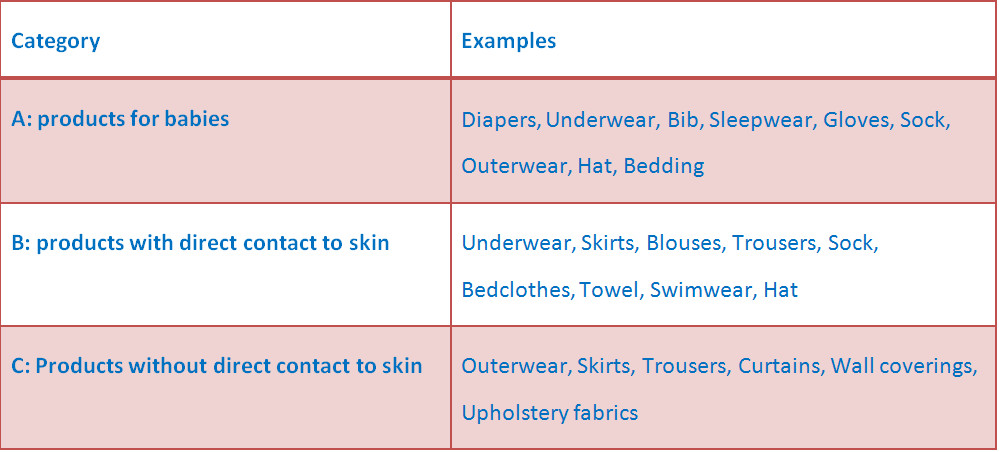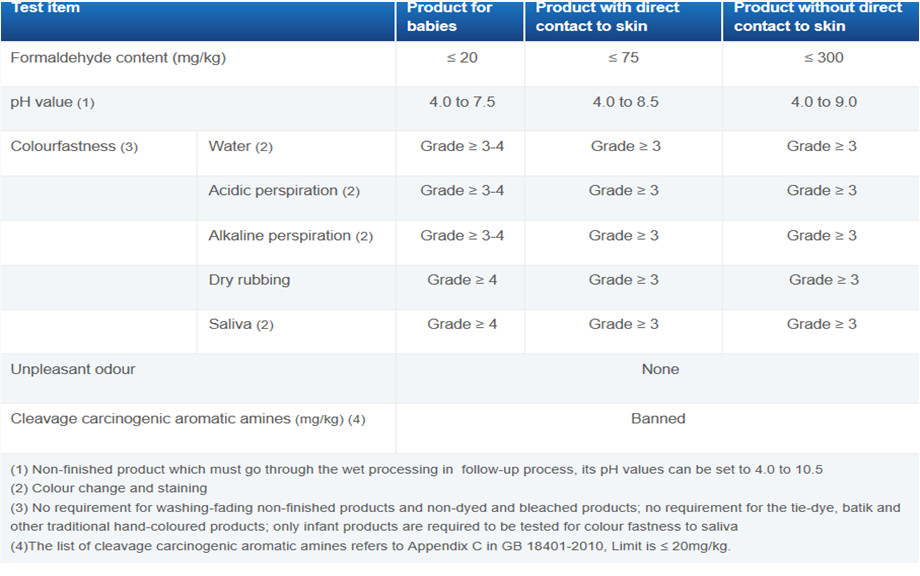Every kind of textile products has corresponding national and industrial standards.
However, GB 18401-2010 National general safety technical code for textile product and GB/T 29862-2013 Identification of fiber content are general standards for textile products. Many people think that standards for textile are so lengthy and cumbersome that generate conflict in mental. Actually, it’s easy to understand this standard. The following are some tips to understand both standards for textile product.
3 tips to understand GB 18401-2010: National general safety technical code for textile product
1. All requirements in this standard are mandatory.
Scope: this standard applies all clothes and decorative textiles manufactured, sold, or used in China
2.Category of textile product
A: Products for babies: Textile products are provided for children under 36 months of age.
B: Products with direct contact to skin: textile products are worn with a large part of their surface in direct contact with the skin.
C: Products without direct contact to skin: Textile products are worn with only a little part of their surface in direct with the skin.
Below form are examples for three categories:

3.Testing Items:
Please see below test list and requirements for reference:

2 tips to master GB/T 29862-2013: Identification of fiber content
1.Permanent labels
It should be always attached on the product and its words are still legible and easy to read after being subject to the care instruction provided by manufacturer.
2.Tolerance of fiber content
1) If products or components are made from one kind of fiber only, the fiber content should be claimed “100%”, “Pure”, or “whole”, no tolerance of fiber content is allowed (including trace of other fiber)
2) If products or components contain decorative or special fiber (e.g. elastic fiber, metallic fiber) and total content is ≤5% (for pure wool textile ≤7%), the fiber content can be claimed “100%”, “Pure”, or “whole” with “excluding XX fiber “, no tolerance of fiber content is allowed.
3) If products or components contain two kinds of fiber or more, excluding these fibers exempted from this standard. The tolerance of each fiber is 5% and stuff is 10%
4) If the fiber content of a certain stuffing fiber on the label is ≤ 20%, the fiber content tolerance should be 5%, if the fiber content of a certain stuffing fiber on the label is ≤5%, the real content should not be 0.
5) If the product or components contain two kinds of fiber or more that total content is ≤0.5%, the sum can exclude these fibers, if applicable, can claim “ including trace of XX “ or “ including trace of other fiber”.
It’s easy to understand and master both standards by 3+2 mode. In order to protect our own rights and interests, we have to put standards into use; in order to put standards into use, we have to understand standards.

 CN/中国
CN/中国  US/USA
US/USA  KR/Korea
KR/Korea  DE/Germany
DE/Germany  ES/Spain
ES/Spain VN/Việtnam
VN/Việtnam